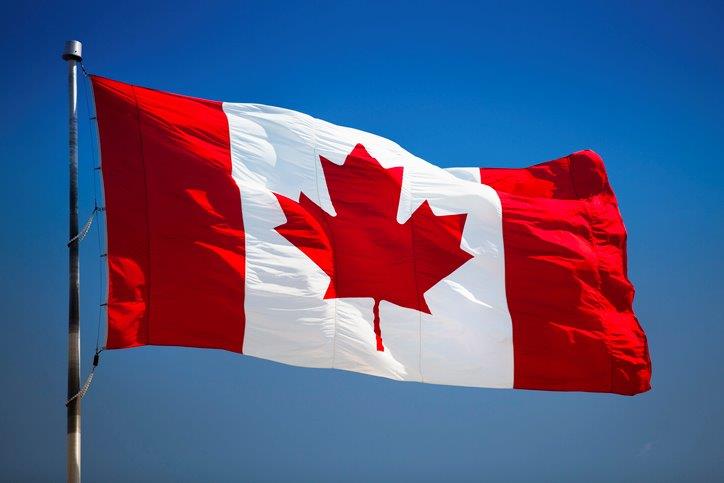Canada’s carbon price will increase on April 1. By how much?
Canada’s carbon price is set to increase next month despite several premiers asking Ottawa for a pause.

The carbon price is a “cornerstone policy” of Prime Minister Justin Trudeau’s minority Liberal government, said Hadrian Mertins-Kirkwood, a senior researcher with the Canadian Centre for Policy Alternatives.
But provincial leaders like Newfoundland and Labrador Liberal Premier Andrew Furey are calling for a halt over affordability concerns.
So how much is the carbon price going up by? Here is what you need to know
Why is the carbon price increasing?
The looming April 1 carbon price hike is not an “unexpected increase,” Mertins-Kirkwood said.
“The idea is that by putting a price on pollution, people will use fewer fossil fuels, and that drives down overall emissions from the economy,” Mertins-Kirkwood told Global News.
Annual increases make up the government’s overall pricing scheme. In fact, increases are planned until at least 2030.
“A province or territory can decide to voluntarily adopt the federal pricing system,” the government said on its website.
“If a province or territory decides not to price carbon pollution or proposes a system that does not meet the minimum national stringency standards, that jurisdiction is subject to the federal pricing system to ensure there is an appropriate price on carbon pollution across Canada.”
British Columbia, Quebec and the Northwest Territories are the only regions that have their own carbon pricing systems in place.
Where will the carbon price increase be reflected?
The planned April 1 increase will be most noticeable at the gas station and on energy bills in provinces and territories where the federal backstop plan applies, Mertins-Kirkwood said.
“It’s still a smaller effect on your energy bills than just the global price of oil, or even things like corporate profitability,” he said. “It’s one factor, but on its own, the kind of effects of the carbon price are overblown when it comes to household affordability.”
Mertins-Kirkwood added Canadians will also see “indirect effects” of the carbon price, pointing to transportation costs that can filter down into food prices.
Inflation has been cooling in Canada after peaking at 8.1 per cent in June 2022; inflation came in at 2.9 per cent in January, Statistics Canada said, and as part of that, food inflation at the grocery store cooled to 3.4 per cent, down from 4.7 per cent in previous two months.
However, the prices of food purchased from restaurants were up 5.1 per cent annually in January, the agency said, down from growth of 5.6 per cent in December.
Why are premiers calling for an April 1 pause?
In a letter to Trudeau, Furey said that while his government is “deeply invested” in environmental sustainability, the planned increase “is causing understandable worry as people consider how they will manage the mounting financial strain.”
Ontario Progressive Conservative Premier Doug Ford, Alberta United Conservative Premier Danielle Smith and Saskatchewan Premier Scott Moe, who leads the conservative Saskatchewan Party, each signaled their endorsements for Furey’s call by reposting the letter to their own X accounts on Tuesday.
“If they don’t start putting money back in people’s pockets instead of filling their pockets, guess what? They’re going to get annihilated, as I’ve said before, they’re done. They’re done like dinner,” Ford told reporters in Pickering, Ont., on Wednesday.
Manitoba’s NDP Premier Wab Kinew has also said he wants to take another look at how the federal carbon price is applied in the province, but it could take up to three years for any change.
Furey asked for Ottawa to address ramifications currently faced by families and “to not compound them,” urging the government to pause the increase until inflation cools, interest rates lower and pressures on the cost of living “significantly cool.”
The federal Conservatives have criticized carbon pricing for much of its existence, with Conservative Party Leader Pierre Poilievre promising to remove it if the party takes government in the next election.
Trudeau didn’t signal a pause was coming when speaking to reporters in Calgary on Wednesday.
“The price on pollution was designed to do two things: send a clear signal to investors, to companies, to Canadians that it makes good sense to invest in reducing our carbon emissions and saving energy, and a price signal is the clearest way of doing that,” he said.
“The second goal of the price on pollution was to make sure that middle-class families and vulnerable families across the country weren’t carrying the brunt of that price on pollution, and that’s exactly what we’ve done.”
Mertins-Kirkwood said a pause wouldn’t drastically change affordability.
“The politics here are totally out of sync with what the actual policy is. Now, of course, it doesn’t mean every household is better off. If you’ve got a big house that you heat with gas, you got two big trucks in the driveway, you are going to pay more, but that actually doesn’t describe most households in Canada,” he said.








